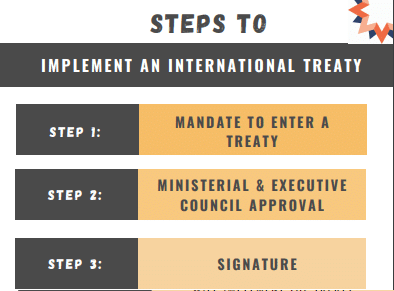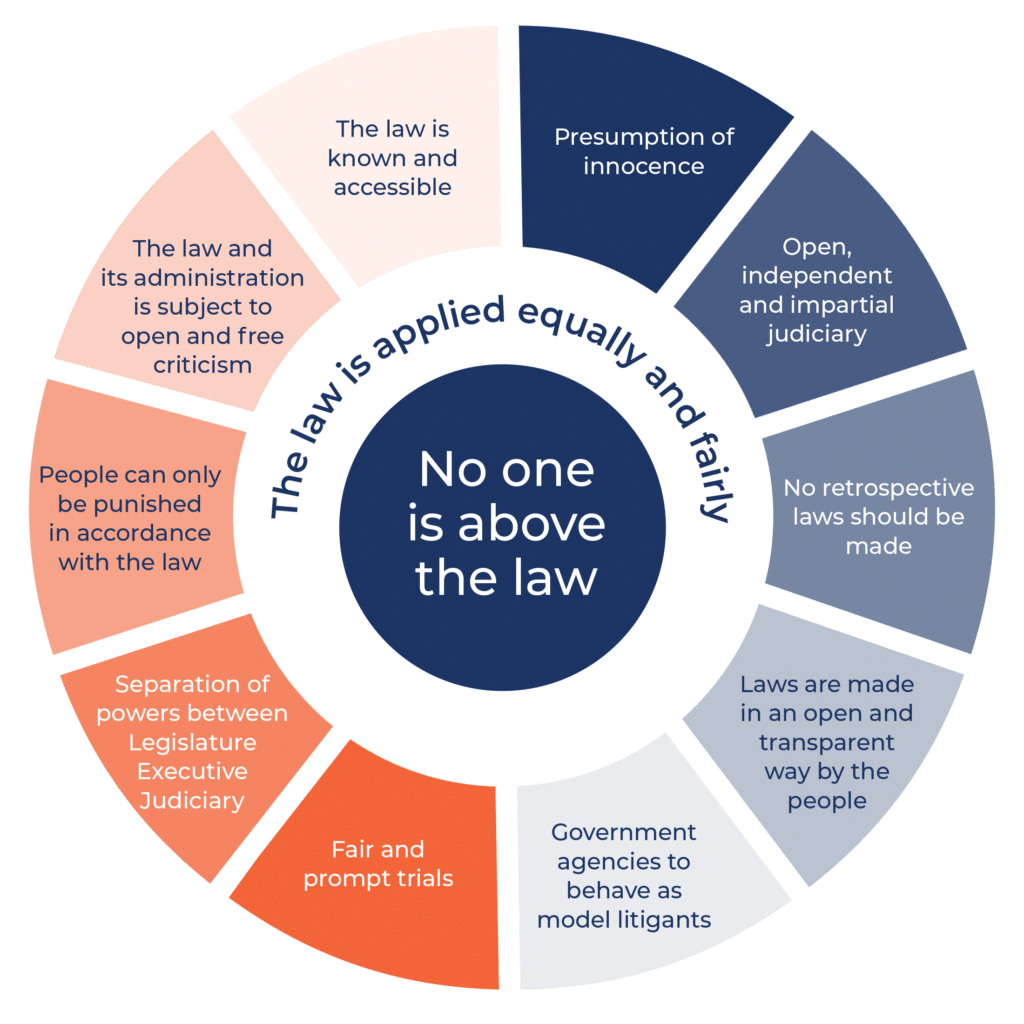This explainer sets out the legal process that underpins how a treaty is created under International Law and then becomes part of the Australian domestic law. Definitions of key terms related to the treaty process have been taken from the United Nations and the Department of Foreign Affairs and Trade .
What is a Treaty?
Australia becoming a party to a treaty is a legal process. The Australian law recognises that a treaty is:… an agreement between States (countries) which is binding at international law. In some cases international organisations can be parties to treaties. An agreement between an Australian State or Territory and a foreign Government will not, therefore, be a treaty. Even if a document is agreed between two or more sovereign countries, it will not be a treaty unless those countries intend the document to be binding at international law. DFATSection 61 of the Australian Constitution allows Australia to enter into treaties as an exercise of Executive Power. Treaties are then tabled in both Houses of Parliament.
A treaty is generally tabled after it has been signed for Australia, but before any treaty action is taken which would bind Australia under international law. DFATThe legal process for Australia to sign, ratify or accede to an international agreement/treaty is the following:
- Signature – agreement in principle, but not legally bound by the treaty.
- Ratification – a binding agreement that Australia will implement the treaty. In the case of a multi-lateral United Nations agreement an instrument of ratification prepared by the Australian Department of Foreign Affairs and Trade is deposited with the UN Secretary-General after being approved by the Governor-General in Council.
- Accession/Implementation – the Parliament implements the agreement as an Act of Parliament Example: the Racial Discrimination Act 1975 (Cth) implements the Convention for the Elimination of Racial Discrimination
Signature
Australia signs treaties it agrees to as part of it’s membership of the United Nations.… it is a means of authentication and expresses the willingness of the signatory state to continue the treaty-making process. The signature qualifies the signatory state to proceed to ratification, acceptance or approval. It also creates an obligation to refrain, in good faith, from acts that would defeat the object and the purpose of the treaty. United Nations Library
Ratification
The institution of ratification grants states the necessary time-frame to seek the required approval for the treaty on the domestic level and to enact the necessary legislation to give domestic effect to that treaty. United Nations Library
Accession/Implementation
“Accession”or Implementation is the act whereby a state accepts the offer or the opportunity to become a party to a treaty already negotiated and signed by other states. It has the same legal effect as ratification. United Nations Library
Reservations
A reservation enables a state to accept a multilateral treaty as a whole by giving it the possibility not to apply certain provisions with which it does not want to comply. United Nation Treaty Collection
State Sovereignty
A sovereign state is a state that has the following characteristics:- one centralised government
- has sovereignty over a specific geographic area – defined territory
- has a permanent population
- capacity to enter into diplomatic relations with other states
State sovereignty is the ability of a nation state to make laws for its citizens without external interference. The impact that state sovereignty has on human rights influences whether there is recognition, protection or enforcement of such rights. NSW Board of Studies Ratification of international treaties does not involve a handing over of sovereignty to an international body. “ and “In the absence of legislation, treaties cannot impose obligations on individuals nor create rights in domestic law DFAT
Human Right Treaties that Australia has Signed
The Commonwealth Attorney General’s Department lists the following treaties:Australia is a party to the seven core international human rights treaties:
- the International Covenant on Civil and Political Rights (ICCPR)
- the International Covenant on Economic, Social and Cultural Rights (ICESCR)
- the International Convention on the Elimination of All Forms of Racial Discrimination (CERD)
- the Convention on the Elimination of All Forms of Discrimination against Women (CEDAW)
- the Convention against Torture and Other Cruel, Inhuman or Degrading Treatment or Punishment (CAT)
- the Convention on the Rights of the Child (CRC)
- the Convention on the Rights of Persons with Disabilities (CRPD).



